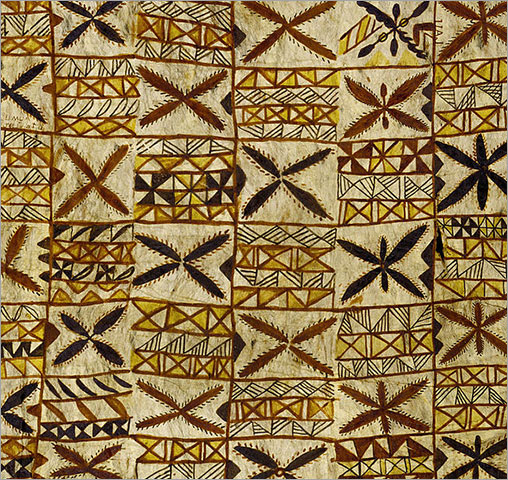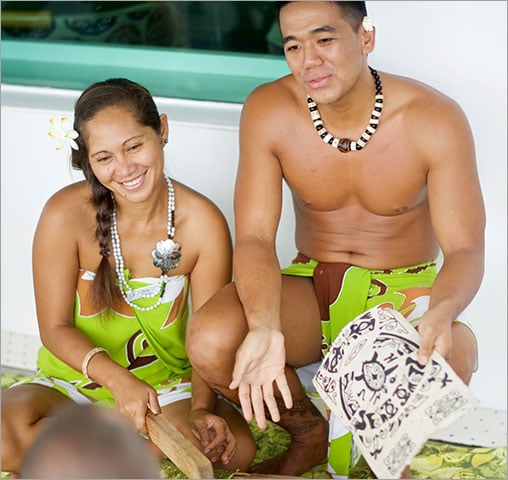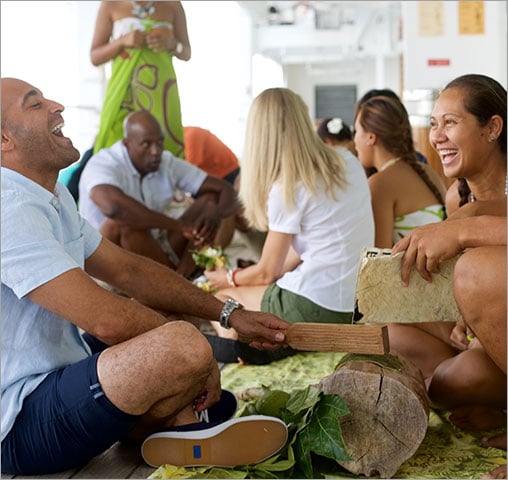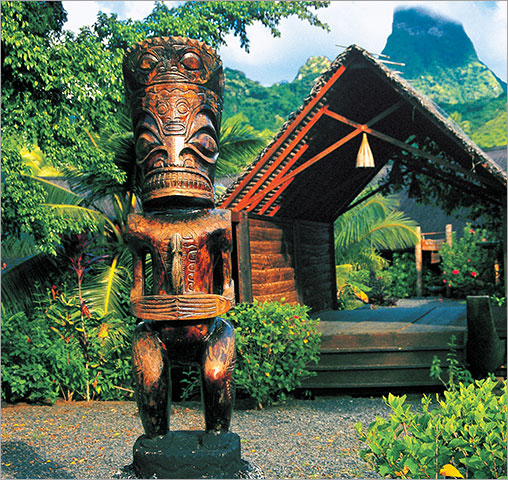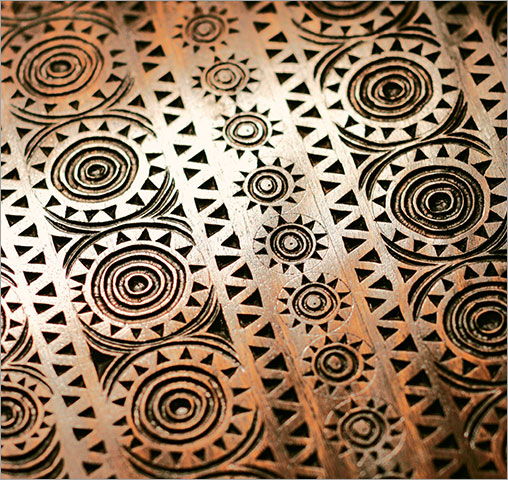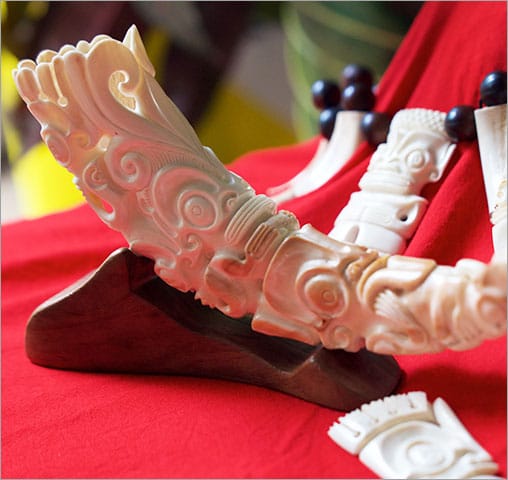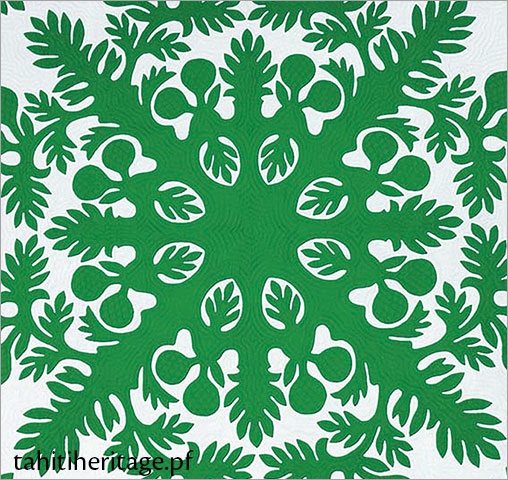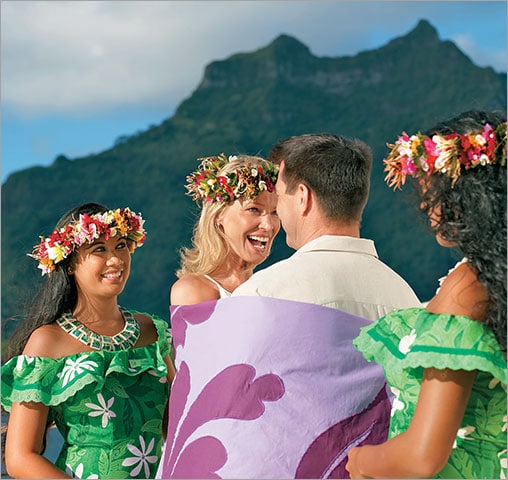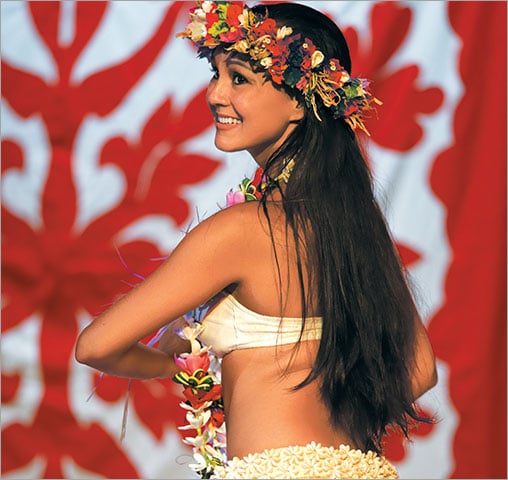Handmade Crafts
Part of Polynesia’s charm is the beauty of its decorative arts. Thatched homes, the sway of a printed pareo wrapped around a vahine as she walks down the street, necklaces made with live flowers and seeds, and the intoxicating smell of tiaré-infused coconut oil. All these add an indelible magic to a vacation in the South Seas. Simple organic materials are transformed into works of art, and each island is known for its own specialty.
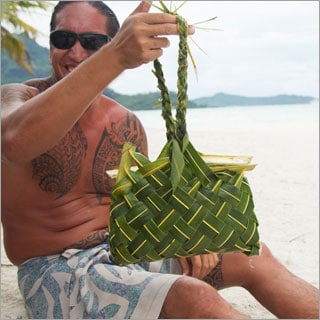
Pandanus Basketry
A practical and handy resource for basketry grows everywhere in the islands. Wacky looking pandanus trees are unmistakable for their exposed root systems, gravity-defying trunks, and long, thin bladelike leaves. The strong, reedy leaves are used to make the roofs for overwater bungalows, and they put the sass in a grass skirt. Islanders split the leaves and weave them into a variety of inventive household and fashion items. You’ll find hats, totes, hair ornaments, baskets, and mats. These woven crafts add charm and texture to the relaxed lifestyle of the islands.
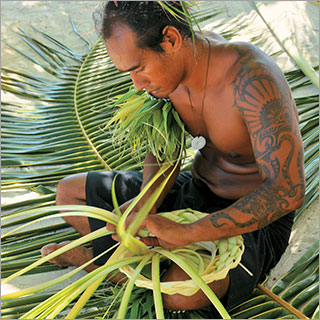
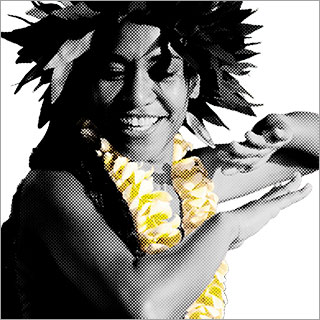
Lei
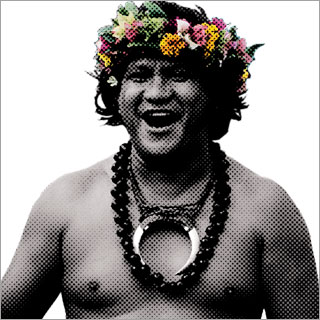
Hei
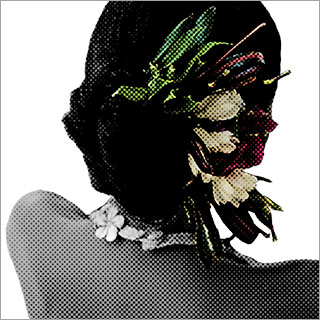
Umuhei
Shortly after you land at the airport in Tahiti, you may encounter your first Polynesian tradition. Leis are garlands given as a sign of love, appreciation, or friendship. Worn around the neck, the ritual of giving them is centuries old. Leis are most often made with shells or flowers. Ceremonial crowns called heis are also made with flowers, but with the addition of intertwined greens. They are worn at celebrations like a wedding, or even to celebrate the kickoff of a Polynesian vacation. Umuheis are fragrant garlands scented with essential oils like sandalwood and ylang-ylang. Considered sensual, they were traditionally worn in the hair or on the body to attract members of the opposite sex.
Tapa Cloth, Cook & Marquesas Islands
You may or may not recall the paper clothing trend of the swinging 60s? Long before that popular but short-lived trend, ancient islanders were crafting fabric from the bark of mulberry and breadfruit trees. Beaten and mashed, the wood fibers were then pounded into the islands’ first fabric. Plant dyes were used for embellishment with hand-printed or hand-stamped decorations.
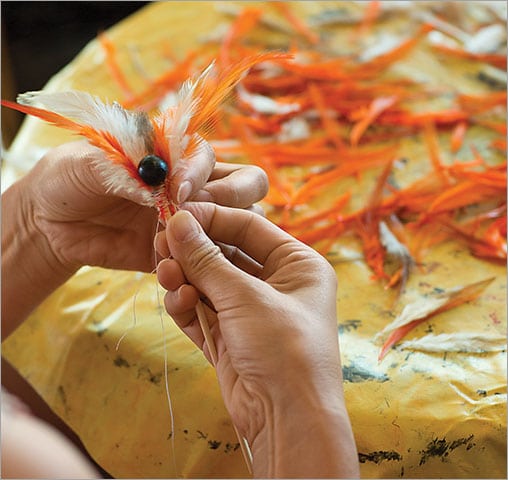
Les Gauguines & Les Gauguins
Lazy afternoons at sea are the perfect time to get creative. Les Gauguines & Les Gauguins, the ship’s cultural ambassadors, maintain a regular schedule of cultural lectures and craft classes. They will teach you how to fashion a Tahitian hair pick, shell bracelet, or other treasures right onboard the ship.
Carvings
The carvings of the Marquesas and Cook Islands will help you travel back in time to the ancient world of the Maori civilization. They tell the stories of its gods, its ancestors, and its culture. Fierce Tikis will bring you protection. Nautical Maori carvings pay homage to the sea voyaging life. You’ll also find carvings of mythic animals, once viewed as sacred, whose images will bring you good fortune. If you stroll the market on remote Tahuata in the Marquesas, you’ll find an exemplary collection of jewelry and figures, and you’ll have the opportunity to speak to the artists who made them.
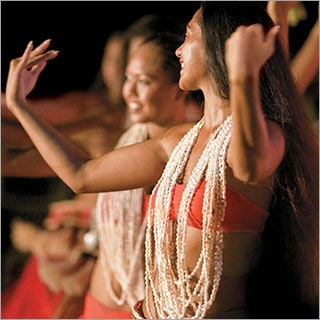
Jewelry: Seed, Nut, Bone
Strung together with the intricacy of a spider web, you’ll be amazed by the island craft of weaving seeds into women’s jewelry. Complex mosaics are woven into necklaces and earrings using a panoply of different seeds, in varying sizes and colors. These masterworks of statement jewelry are sure to catch your eye. Seed jewelry isn’t just for women, though. In the Maori tradition, men wear bold tribal collars fashioned with carved tamanu nuts and shark cartilage.
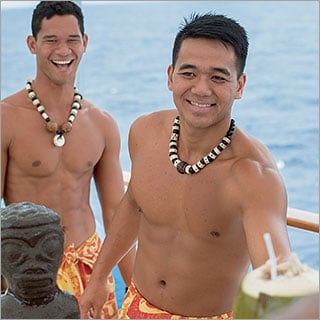
Tifaifai [ti-fay-fay]
Your grandmother’s patchwork quilt has an exotic South Seas cousin—the tifaifai (or tivaevae in the Cook Islands). Silhouettes of hibiscus flowers, palm fronds, and other Polynesian iconography are appliqued or patchworked onto handmade quilts created in the colors of the South Seas. If you are celebrating an anniversary or honeymoon, you may find yourself wrapped in one of these during a special ceremony on board The Gauguin. Keep an eye out for this lovely Polynesian textile art if you think you’d like to take one home with you as a reminder of your halcyon days in the sun.
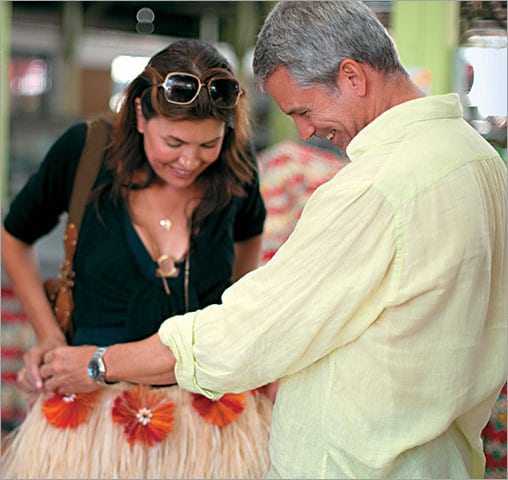
The Best Places To Find Souvenirs
Comb the local markets of the islands for a memento to take home with you. Whether its shell jewelry, abalone carvings, strings of shark’s teeth, or handcrafted seed jewelry, the best artisans are found in situ where the materials are plentiful. The most remote destinations of the Cook and Marquesas Islands yield the best carvings, tapas, and weavings. If you can’t travel to a particular island to snap up its specialty, check out the shops along the port in Papeete. For high-end Tahitian pearls, you need not go any further than The Gauguin’s La Boutique.
